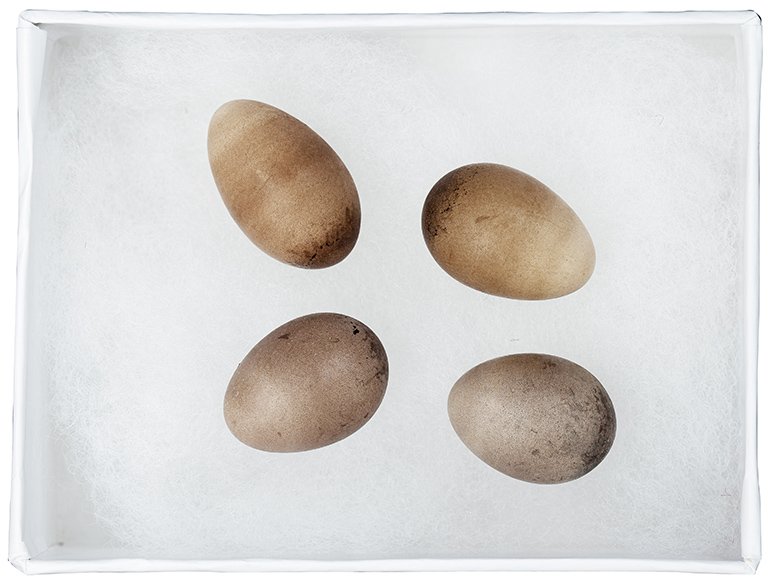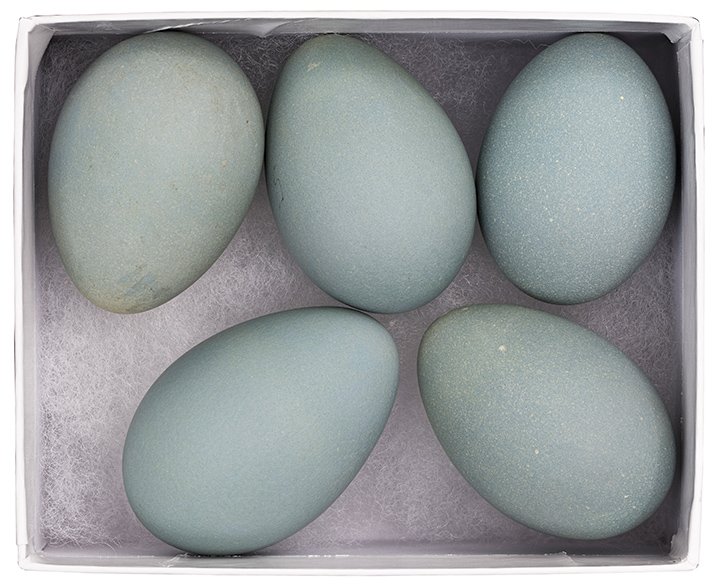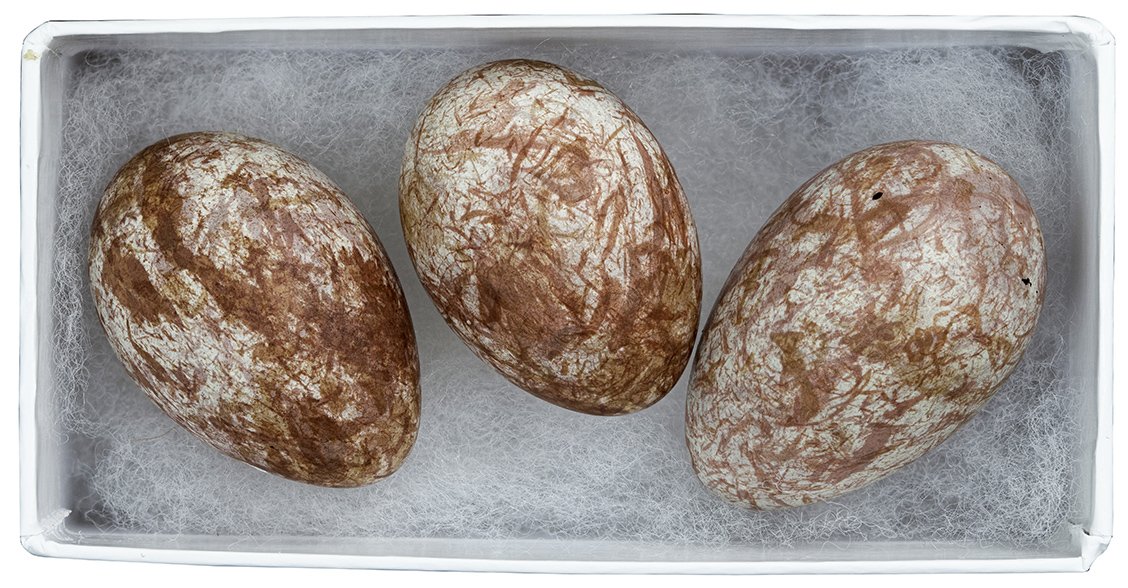Beautiful birds eggs

THE REASONS FOR the beautiful appearance of eggshells are still debated, says Karen Rowe, an ornithologist at Museum Victoria in Melbourne, but there are a number of possible evolutionary causes.
“It’s likely the colour patterns observed in Australian bird species result from a range of selection pressures,” she says. “For example, greater camouflage from predators, to identify eggs laid by brood parasites [such as cuckoos], and to add structural strength.”
The chemical compound that causes specks and spots can toughen shells, and patterns are more likely to occur if the mother is low on calcium.
In some species, markings help distinguish a clutch in a crowd. Shell pigments can reflect UV rays, while others have antibacterial properties.
The reasons for shape and size are similarly debated. Researchers say cliff-roosting seabirds produce pear-shaped eggs to stop them from rolling away, while ground-dwelling birds are more likely to produce spherical eggs. Oval shapes may increase legroom for baby chicks, and help with laying.
So, why lay eggs? Birds must be very lightweight to fly. Growing offspring in utero is weighty, affecting a mother’s ability to defend a nest and collect food.
Comb-crested jacana
Irediparra gallinacea
Found: South Grafton, NSW; Length: 3.5cm

Image: David Paul
The comb-crested jacana builds a flimsy nest on floating plants in wetlands. Eggs usually come in clutches of four, and their markings are probably for camouflage among the reeds that dominate the environment.
Yellow-throated scrubwren
Sericornis citreogularis
Clarence River, NSW; 2.5cm

Image: David Paul
An added benefit of oval-shaped eggs is that they fit together to create a small, snug group within the nest. This makes a clutch easier for a mother to sit on during the incubation period, and also requires less of her energy to keep them warm.
Chestnut-backed buttonquail
Turnix castanota
Northern Territory; 2.3cm

Image: David Paul
Given the spherical shape of these eggs, it’s no surprise that this species of buttonquail hangs out in savannah areas. The species prefers to nest on flat ground near shrubs and in low grasslands, where there is little danger of eggs rolling away.
Glossy ibis
Plegadis falcinellus
Kerang, VIC; 4.9cm

Image: David Paul
Blue and green colouration in eggs is due to a pigment called biliverdin, which occurs in human blood, and in eggs, within the shell gland. It is the same pigment that sometimes causes green bruises on human skin.
Australian magpie
Gymnorhina tibicen dorsalis
Western Australia; 4cm

Image: David Paul
Magpie eggs are pear-shaped and up to 40mm long; however, the size of the egg depends on the condition of the mother. A healthy bird will lay larger eggs, allowing for a more robust chick with a higher chance of survival.
Cassowary
Casuarius casuarius
Clump Point, QLD; 14cm

Image: David Paul
All eggs are porous to allow oxygen to the embryo; however, cassowary eggs have a unique branched pore system to help minimise water loss during oxygen transfer in their humid environments. For large-bodied birds, shell thickness must strike a balance between strength, to keep the egg from breaking, and brittleness, to allow the chick to emerge when it’s ready.
Banded Stilt
Cladorhynchus leucocephalus
Lake Callabonna, SA; 5.5cm

Image: David Paul
These water dwellers have unique nesting habits. According to researchers, their mating season revolves around occurrences of flooding in their lakeside homes, because they prefer to nest in areas with very sparse vegetation beside the water.
Victoria’s riflebird
Ptiloris victoriae
Bloomfield, QLD; 3.3cm

Image: David Paul
Streaky patterns are created by pigments deposited when the final, outermost layers of the shell are forming. As the shell moves through the bird’s uterus, it may rotate, esulting in patterns reminiscent of paintbrush strokes.
Willie wagtail
Rhipidura leucophrys
Sale, VIC; 2.2cm

Image: David Paul
The ring shape on this willie wagtail’s eggs is thought to be a way of breaking up the shell pattern for camouflage. This tactic may help disguise the eggs against predators, which is particularly handy given this species builds its nest on open tree-branches, with little cover.
Note: eggs not to scale.

